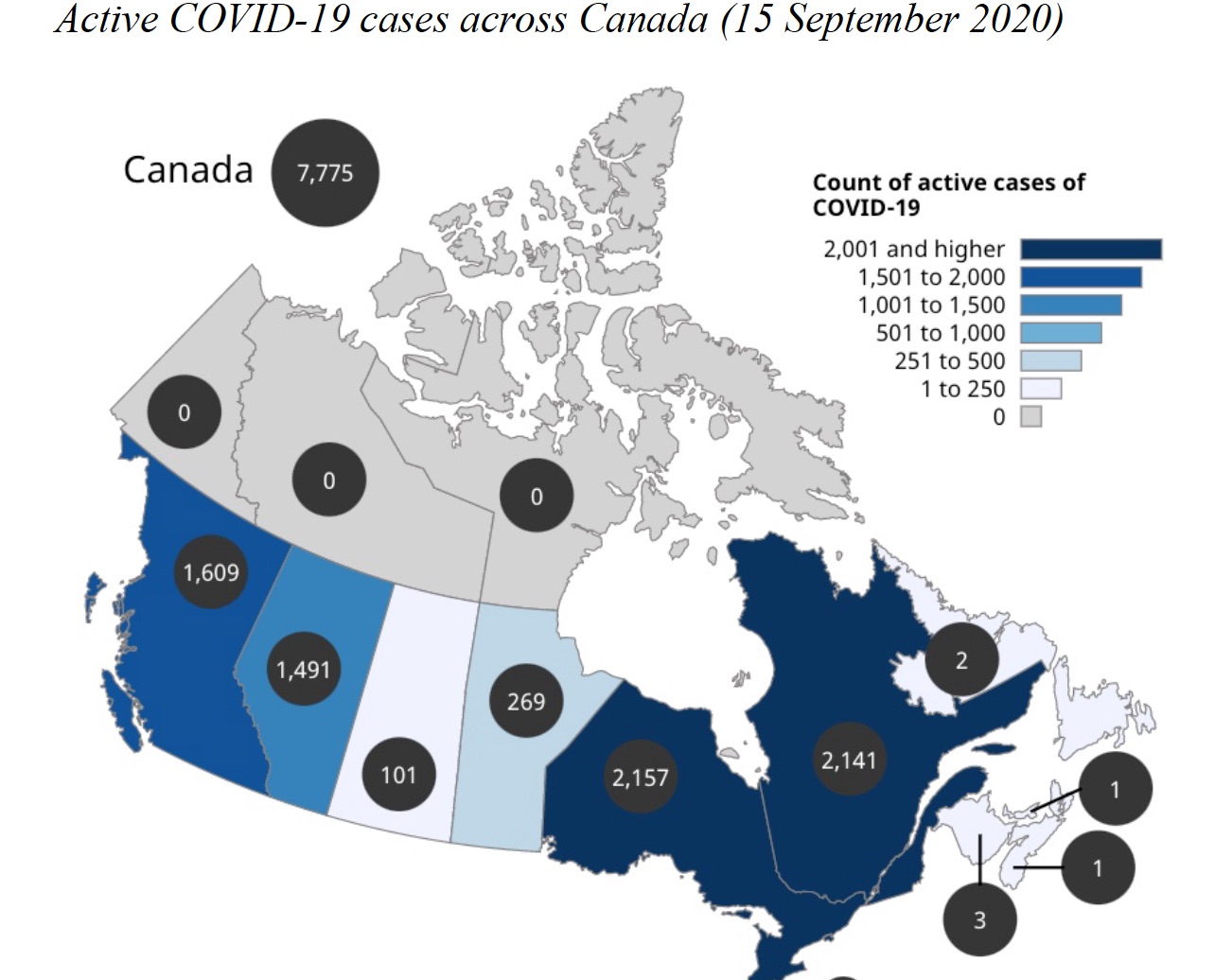
Nagle, J., Barbour, M. and LaBonte, R. (2020) A Fall Like No Other: Between Basics and Preparing for an Extended Transition During Turmoil Canadian Elearning Network, November
This report is essential reading for anyone in the k-12 sector.
What is the report about?
It highlights the announcements, supports, and policy changes each Canadian jurisdiction made to continue to promote learning throughout the pandemic. Information was gathered for each province and territory through government websites, educational organizations, and current news releases. This information highlighted each jurisdiction’s strategies to provide supports, resources, and technologies appropriate for the continuation of teaching and learning. The report provides a description of what was announced and provided for by provincial and territorial Ministries of Education during the Fall 2020.
(For non-Canadians, please be aware that education in Canada is primarily a provincial responsibility, although each region or area within a province will have its own school board.)
Below is my personal summary. Please though read the main report as the details are really important.
What happened in the fall of 2020?
The approach taken varied among each of the provinces and territories.
- Some jurisdictions required students to wear masks in school buildings, others did not. Many jurisdictions required masks to be worn when physical distancing was not possible.
- Some jurisdictions announced specific plans for remote learning, others relied on existing online learning programs for students who remained at home.
- Few jurisdictions announced or published specific plans for professional development or training for teachers new to remote learning.
- Most schools opened as planned with physical distancing measures, restricted movement, and encouraged outdoor activity when possible.
- Remote learning choices were offered, but there were issues of managing choices as parents chose to shift from remote to online or the reverse after the school year started. Teachers had to be shifted from teaching in the classroom to teaching remotely or in a hybrid format as student groupings and classroom attendance shifted during the opening months.
- For the most part, the supports and resources provided by each of the jurisdictions continued as in the Spring, including access to mail delivery of educational learning packages, radio and television broadcasting, centralized learning management systems, and access to a variety of digital tools.
- Some provinces such as Newfoundland and Labrador, New Brunswick, Nova Scotia, Ontario, and British Columbia provided technology to students.
- All jurisdictions – except for Alberta, Ontario, and New Brunswick – provided resources that did not require internet access.
- Further, some jurisdictions, such as British Columbia, Yukon, Northwest Territories, and Nunavut continued to make specific considerations for Indigenous students.
Importantly, the report also tracks, province by province, the trend in Covid-19 infections from 31 July to 15 September. This shows clearly a fairly rapid increase in infection rates as school openings approached, which obviously would have impacted on decision-making not only by provinces and school boards, but also by parents. In short, planning in the summer did not always match the reality in the fall. As the report states:
- at first, planning for a return to remote learning was either marginally discussed or not in the forefront of publicly announced planning for many jurisdictions. While… distance learning was considered as an option, little significant planning, resourcing, and most importantly teacher training was announced for any increase in remote learning beyond what had been in place either before the pandemic or offered during the Spring of the pandemic period….While some training was provided for teachers transitioning to
include online learning as options for instruction, most time was devoted to ensuring learning could occur within school buildings amidst the addition of health and safety protocols.
My comments
I was not involved in this study, other than writing the foreword after the report was complete, and the authors deliberately avoided value judgements about the plans and strategies adopted, which is why anyone interested should read the full report.
So here are my own thoughts.
- There was no good solution for the k-12 school systems for the opening of the fall semester; all decision-makers could do was to pick the least worst solution. I say this because there are overwhelmingly good reasons for young people under the age of 18 to be in full-time, campus-based education. Online learning is a good option for some students, mainly in Grades 11 and 12, who may have strong personal reasons for studying at home or independently, and there are elements of learning that can be done effectively online for younger students, but in general the younger the child, the stronger the reasons for them to be in school. However, there were increasingly high rates of infection in the community when schools opened in September.
- Nevertheless, the school systems appear to have fared worse in the fall than post-secondary institutions in responding to Covid-19. Most post-secondary institutions in Canada decided sometimes as early as May that a very large part of the fall semester would need to be online, and largely prepared for this. In particular, there was extensive faculty and instructor training in online learning during the summer in Canadian post-secondary institutions.
- However, this does not appear to have happened in the school systems. The focus, understandably, was on making classrooms and the wider campus environment safe. Only as schools re-opened was it clear that many parents had concerns about the safety of children going to school.
The important lesson here is that training in online learning and teaching should be much more widespread in the school system than at present. This would make it much easier for some teachers to pivot to online learning, and this would allow separate tracks for students whose parents opt for online learning for health and safety reasons.
Covid-19 is not going away any time soon, and there will be other emergencies in the future. Having a significant cohort of teachers with training in online teaching, varied according to the age of the students, will increase the resilience of the k-12 system.
Another lesson is that we may need much more flexibility in the curriculum. Different approaches to online learning will be required, depending on the age or grade of the student. Online learning needs a different design than classroom teaching, so that students can take advantage of the affordances of asynchronous learning when studying online, so any training in online learning should be accompanied by changes to the curriculum and the resources to be used.
Online learning should not be better or worse than classroom teaching, nor should the eventual learning outcomes be inferior, but online learning does need to be different in design if it is to succeed, and adapted to the age and needs of the students. And above all, at least a significant number of teachers need training in online learning – just in case.










 Dr. Tony Bates is the author of eleven books in the field of online learning and distance education. He has provided consulting services specializing in training in the planning and management of online learning and distance education, working with over 40 organizations in 25 countries. Tony is a Research Associate with Contact North | Contact Nord, Ontario’s Distance Education & Training Network.
Dr. Tony Bates is the author of eleven books in the field of online learning and distance education. He has provided consulting services specializing in training in the planning and management of online learning and distance education, working with over 40 organizations in 25 countries. Tony is a Research Associate with Contact North | Contact Nord, Ontario’s Distance Education & Training Network.

